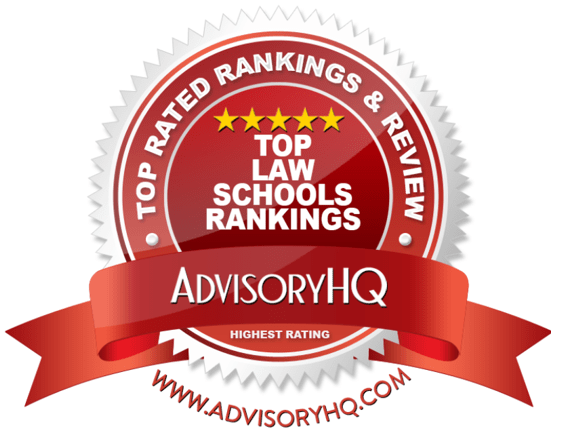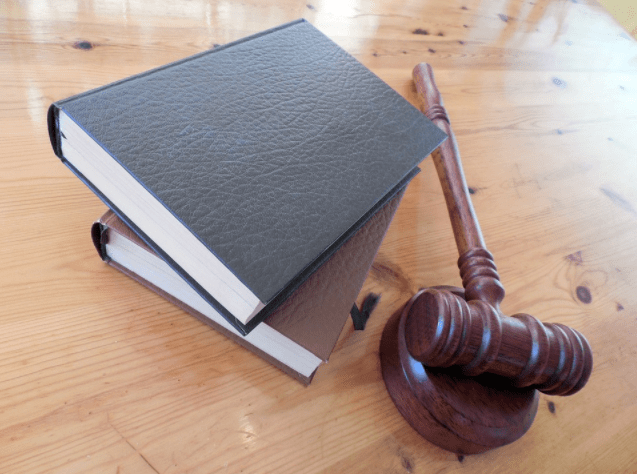Intro: Top Law School Rankings | The Best Sites That Offer Rankings of the Best Law Schools
Not everyone wants to be a lawyer. Recent trends show a decrease in aspiring law students, and the number of students applying to law school has declined.
However, that hardly means it’s no longer the right vocational pursuit for thousands of people out there.
When it comes time to pick a law school, you want to be picking from a list of the top law schools. An easy way to do this is to take a look at law school rankings.
There are several institutions out there that take it upon themselves to review and rank the best law schools, and, in most cases, that information is easy to get a hold of.
Just as different students want to pursue different degrees, different publications focus on different law school attributes in order to best assemble their law school rankings. This article focuses on sites producing US law school rankings.
While a US-based list does exclude some of the best law schools in the world, it includes some of the best law schools in the world, too.


Award Emblem: Top Law School Rankings
This article looks at the differences between sites that rank top law schools. A search is always easier if you know where to look and what you’re looking for. This article aims to break down the methodologies behind some of the best sources for law school rankings.
See Also: Rocket Lawyer Review – What You Should Know About Rocketlawyer.com (Reviews)
Criteria for Law School Rankings
As you visit these sites, you’ll see many of the same schools repeated in high-ranked seats on the various lists. Each site uses slightly different criteria to assemble its ranking of top law schools.
It’s no accident that certain schools consistently outrank other schools, despite different ranking methods.
It’s often because these schools excel in the multiple areas that make law schools – and schools in general – great. Here are some common factors:
- GPA
- LSAT scores
- Tuition costs
- Post-grad employment
- Acceptance rate
- Quality of life
These elements are the bare bones of ranking criteria. Let’s take a look at specific sites.
The Princeton Review Law School Rankings
A very popular and reputable source for law school rankings is the Princeton Review. One of the elements that raises its review quality is its data collection method. For its ranking of best law schools, the Princeton Review surveys more than 19,700 law students across 173 law schools.



Image Source: Top Law School Rankings
Methodology
In terms of methodology, Princeton Review takes a number of factors into account:
- Best classroom experience
- Best professors
- Most competitive students
- Best career prospects
- Most conservative students
- Most liberal students
- Best environment for minority students
- Most diverse faculty
- Best quality of life
- Most chosen by older students
- Toughest to get into
In order to understand what this entails, it’s worth looking into Princeton Review’s methods for acquiring this data. Let’s take a closer look at each of these categories.
Best Classroom Experience and Best Professors
A strong professor and a solid classroom experience are a necessity for all the best law schools. The criteria for best classroom relies on more than just the facilities.
The rankings for this category come from student answers to survey questions addressing several aspects of the overall classroom learning experience. Part of this includes the abilities of the professors.
Is the professor an able teacher? Is he or she accessible outside of the classroom? The survey also addresses the balance of theory and practical skills over the course of the curriculum.
Another important element for any learning environment is the tolerance for expressing differing opinions in a class discussion. Princeton Review takes this “able to constructively argue with the professor” mentality into account.
In addition, it analyzes the students’ perceived accessibility to research resources (such as a library or computer lab).
Best Career Prospects
This category comes from a mix of two data pools. On the one hand, you have the student surveys to give first-hand reports on their employment experiences. On the other, you have the information collected by the school.
It is a common practice for schools to collect employment data from their alumni after graduation. Here is what the school data includes:
- Median starting salary of graduating students
- Percent of students employed in a job that requires the bar to be passed
- Percent of students that pass the bar on their first try
Through the survey, the Princeton Review examines whether students felt encouraged to pursue practical experience. It also inquires into the prevalence of internship and externship opportunities and clerkships as well.
Another telling line of survey questioning explores students’ perceived preparedness when it comes to entering the professional law sphere upon graduating. A stronger score indicates that more students have confidence in their abilities to practice law after they graduate.
All-in-One Change Management Tools
Top Rated Toolkit for Change Managers.
Get Your Change Management Tool Today...
The Student Body: Competitiveness and Political Leaning
Maybe you want to be a lawyer, but you want to get your feet wet without worrying about losing toes to the vicious competition. As a student, you’re likely either looking for some inspiring competition or trying to find a place that’s not cutthroat at all. Knowing which top ranked law schools are the most competitive will make the search easier.
The Princeton Review has a few ways to root this information out. The student survey includes questions designed to get data on the following:
- Number of hours studied outside of class by student
- Number of hours studied outside of class by fellow students
- Degree of competitiveness among students at the school
Prospective students could also be interested in the political leaning of the student body. Conservative? Liberal? Neutral? Political viewpoints can impact your relationship to other students and professors, and it could even help with job opportunities post-grad. In this instance, the Princeton Review provided the exact language of the question it used on the survey: “If there is a prevailing political bent among students at your school, how would you characterize it?” The answer choices were as follows:
- Very liberal
- Liberal
- Middle of the road
- Somewhat conservative
- Very conservative
Diversity and Best Environment, Best Quality of Life
The Princeton Review considers the best environment for minority students through the dual use of student surveys and school data. For school data, Princeton Review takes a look at the percentage of students from a minority. On the student survey, the line of inquiry deals with whether the student perceives that all students receive equal treatment from not just faculty but fellow students as well, regardless of one’s ethnicity.
Faculty diversity can be just as important as student diversity. Princeton Review takes this into account by looking at the school data. The percentage of law school faculty from minorities as reported by the school helps determine the ranking for this category. For the student surveys, Princeton Review simply asks students if the faculty is made up of a broadly diverse group of people.
Quality of life might seem hard to quantify, but the Princeton Review has a method. A stronger sense of community led to higher scores. Another element addressed the level of tolerance for differing opinions in the classroom. The school’s location, as well as the social life present at the school, factored in to the quality of life ranking as well. And, finally, the Princeton Review ranking factored in the school’s library, computer labs, and other research resources.
Toughest to Get into and the Older Student Haven
The Princeton Review only uses data from the schools to determine which of the top law schools are the hardest schools to get into. There is no student survey data taken. Instead, acceptance rates and submission totals are used to determine the selectivity of each school.
To determine which of the best law schools are preferred by older students, Princeton Review uses average age of entry. It also looks at how many years students spend out of college prior to beginning their new enrolling process, this time for law school.
Don’t Miss: Lexington Law Reviews – Get all the Facts before Using Lexingtonlaw.com
U.S. News Law School Rankings
As we said earlier, there is more than one site publishing lists of the top law schools. For a look at US law school rankings, we turn to U.S. News. U.S. News assembled its best law schools list using information gathered in 2015 and 2016.
It used weighted scores to rank top law schools based on scoring across 12 categories, or “quality measures.”
The U.S. News top law school rankings include 196 law schools, all of which are fully accredited by the American Bar Association.



Image Source: Rankings of the Best Law Schools
What makes the U.S. News rankings of law schools worthwhile deals not only in its methodology but in its presentation as well.
One element worth noting is that certain ranking information isn’t readily available unless you subscribe to the site. Here’s what you can see on its list before signing up:
- Location
- Tuition
- School size
The true power of its study sits behind a one-time annual fee of $29.95. Paying membership gives you unlimited access to the site for 1 year. With it, you can see considerably more information in its US law school rankings:
- Acceptance rates
- LSAT scores
- Employment statistics ten months after graduation
- Bar passage rate for first attempts
- GPA
- Peer assessment scores
- Assessment scores by lawyer/judges
The ranked list is available, so you can see in what order the top law schools were ranked. What you can’t see is how each of the best law schools scored in the different criteria upon which their rankings hinge.



Areas of Quality Measurement for U.S. News Top Ranked Law Schools
Different categories are weighted differently. After gathering and standardizing the data, the scores are weighted and then totaled. These numbers are then rescaled in order to have the highest scoring school receive a score of 100. The other top law schools receive their respective percentages of the top score, and this score determines their numeric rank on the list.
1. Quality assessment
Quality assessment is weighted by 0.40. Of that, the peer assessment score receives 0.25. The peer assessment asks the deans, deans of academic affairs, recently tenured faculty members, and chairs of faculty appointments to rate the respective programs on a scale of 1 to 5. Five is outstanding while one denotes the lower end of program quality. There is a “don’t know” option, which does not influence the score if selected by a participant.
The lawyers and judges assessment scoring accounts for 0.15 of the weighted score and is conducted in a similar fashion to the peer assessment. Instead of deans and faculty members, however, it’s practicing judges, attorneys, and hiring partners from law firms.
2. Selectivity, Placement, and Passage
Selectivity is weighted by 0.25. U.S. News uses the median LSAT scores of all entrants coming into the program. It also considers the median undergraduate GPA, which includes all 2015 students entered into the program, both full- and part-time. Finally it uses the acceptance rate, which looks at the number of applicants and compares it to the number of full-time and part-time prospective students actually accepted into the top law schools.
Work placement success is an important ingredient for the best law schools. For placement, U.S. News looks at graduate employment at the time of graduation. It also considers graduate employment ten months after graduation. U.S. News includes the bar passage rate as well, although that factor is the smallest contributor to the placement category success scores.
U.S. News uses bar passage rates to compare the school to the bar passage rates of the rest of the school’s state. It only looks at first-time test-takers. The bar passage rate only accounts for 0.02 of the weighted scoring.
3. Expenses, Ratios, and Resources
Faculty resources is the official designation of this category for the U.S. News ranking. It is weighted by a mere 0.15. This includes three categories:
- Expenditures per student
- Student-faculty ratio
- Library resources
Expenditures per student includes the 2014 and 2015 fiscal years. U.S. News also measures financial aid, although that is only weighted by 0.015. Average instruction, support services, and library services are all taken into account as well.
The student-faculty ratio is a straightforward measurement. It compares the number of students to the number of faculty members. To determine library resources, U.S. News simply looks at the school libraries (law libraries only) and calculates the total number of volumes and titles contained there at the end of the 2015 fiscal year.
Related: PRWeb Review | Get the Key Facts Before Using PRWeb









Above the Law – Law School Rankings
Abovethelaw.com is a bit different from the other two sites offering law school rankings in this article. This site claims to show prospective students the data that actually matters in a college search. Here’s what it claims doesn’t matter during a student’s search for US law school rankings:
- LSAT scores
- GPA
- Student scholarships
Instead, what Above the Law focuses on is the following:
- Real law jobs following graduation
- Quality full-time positions
- Alumni satisfaction
- Costs, debt, and salary ratios
The reason for ranking off the beaten path? Above the Law says it’s more important now than ever to make sure you pick the right school for you. In 2015, 41% of graduates did not manage to secure a job in the field of law.
Even the best law schools will only get you so far. It’s true that fewer people are pursuing a degree in law. Even so, in 2015, law grads totaled 39,984. Of those, only 59% landed lawyer jobs. Just above half of the graduates found a job in law after graduating. Here’s the full breakdown:
- Found jobs in law: 59%
- Found jobs in other fields: 28%
- Were unemployed: 28%
- Found positions at a law school: 3%
What Really Matters
ATL asked its audience for the factors that potential law students should consider about law schools before picking and applying.
It used this input to create its scoring methodology for the top law schools in its US law school rankings. Here’s what the survey said (the percentages show the ratio of participants who ranked these categories as “highly relevant”):
- 85% considered employment data highly relevant
- 54% considered large firm placement highly relevant
- 46% considered federal clerkship placement highly relevant
- 40% considered tuition/cost highly relevant
ATL used 8 categories to rank the 50 schools on its best law schools lists. Certain ranking components have a stronger presence in the overall score. This is the ATL law school rankings breakdown. It shows the 8 categories and the percentage that each one affects the total score:
- 30% quality job score
- 30% employment score
- 15% education costs
- 5% percentage of active federal judges
- 5% percentage of SCOTUS clerks
- 5% Above the Law alumni rating
- 5% salary-to-job ratio
- 5% debt per job
The federal judge element and the SCOTUS clerk element might seem extreme; becoming a judge isn’t for everyone, and not everyone aspires to hit SCOTUS proportions. ATL justifies the data inclusion by saying that just as not everyone wants to be a judge, not every law school can make you a judge. It’s important for the people aspiring for judge positions to find information about the top law schools that can actually help them achieve their goals.
Popular Article: SaveYa Review – Tips on Buying and Selling Gift Cards on SaveYa
Free Wealth & Finance Software - Get Yours Now ►
Law School Rankings: The End Game
This article contains information about a few sites, all of which contain a good bit of information of their own.
The search to find the best law schools should be like any good search: it gets narrower as the search goes on. If you don’t know what you’re looking for, it’s easy to get bogged down in law school ranking after law school ranking.
The sites reviewed here have three fairly distinct approaches to top law schools rankings. Even the best US law school rankings will vary from site to site. Knowing what you need out of law school is a pivotal step in selecting your program.
There are good colleges for law, and then there are the best colleges for law.
The sea of competition might be shrinking, but that doesn’t mean you should relax when it comes to creating a list of the best law schools for you. Law school rankings can only take you so far, but they are certainly a good place to start.
Read More: Wealthminder Review – What You Should Know Before Using Wealthminder (Investors and Advisors)
AdvisoryHQ (AHQ) Disclaimer:
Reasonable efforts have been made by AdvisoryHQ to present accurate information, however all info is presented without warranty. Review AdvisoryHQ’s Terms for details. Also review each firm’s site for the most updated data, rates and info.
Note: Firms and products, including the one(s) reviewed above, may be AdvisoryHQ's affiliates. Click to view AdvisoryHQ's advertiser disclosures.



